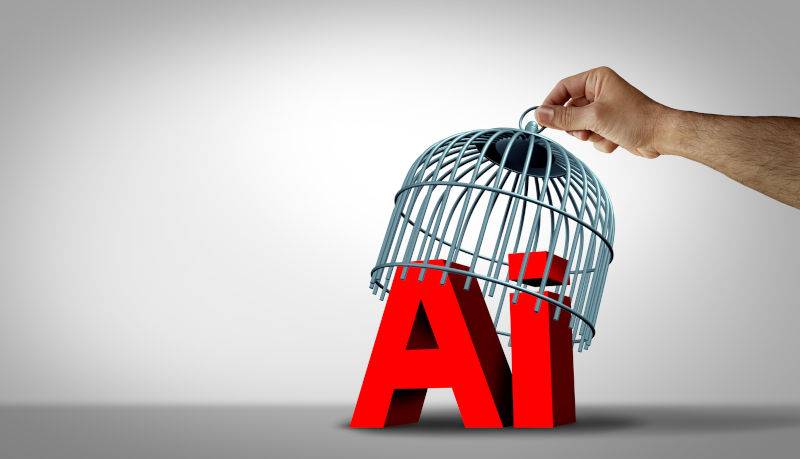Will AI kill the middle class?
November 24, 2025
When the creators of a new technology warn that it could destroy the primary engine of global growth of the past half a century, it’s worth paying attention
Warning signs are flashing from experts, entrepreneurs and workers concerned that automation is coming for a wide range of information-oriented jobs. What ordinarily would be just another boom-bust cycle fuelled by computer-generated efficiency, a typewriter to keyboard type of evolution, is this time threatening to overturn the basic social contract between employers and employees.
Unless and until this is taken seriously by policymakers, the modern middle class risks becoming a relic of simpler, more equitable times.
Anthropic CEO Dario Amodei said during an interview with 60 Minutes that artificial intelligence could “wipe out half of all entry-level white collar jobs and spike unemployment to 10-15 per cent”. His concerns are not misplaced. Early artificial intelligence (AI) pioneer and Nobel Prize winner Geoffrey Hinton has said AI will replace “mundane” intellectual work, which he equated to white collar jobs.
When the creators of a new technology warn about its potential to destroy the primary engine of global growth of the past half-century, it’s worth paying attention.
We are at another transition in the world of work, one where the designers of AI promise to replace not just physical labour through robotics but our thinking work as well. That has tremendous ramifications for what humans will do for employment and whether a vibrant middle class can survive. Perhaps robotics repair technicians will eventually replace auto mechanic jobs, or robots will be trained to fix themselves with near-instantaneous downloads of instruction manuals any time of day.
AI isn’t just a tool like computers, the Internet, smartphones and other digital innovations of the past. Those previous leaps in technological augmentation enabled people to do more and different things. Graphic designers could upskill into electronic publishing and web design without the computers they used replacing them. The humble word processor didn’t obviate the need for typing. When machines become the focal point of information creation, companies no longer need to pay people, or at least they will need far fewer than in the past.
Proponents expect that at some point people will simply use AI like any other tool. They won’t need to know how to code or even give the system prompts. Simple speech will be enough. That sounds good in principle – everyone becomes the owner of their own personal AI assistant that is forever eager to satisfy any command, day or night. That assistant wouldn’t even need health insurance.
We are moving closer to this reality with agentic AI. These semi-autonomous agents can execute a series of commands, from simple tasks such as scheduling work calendar events to interacting with other AI agents. But how many “directors” of AI will be needed in the near future? Recent business school graduates might be thrilled with automated slide deck creation, but only until the number of entry-level jobs falls precipitously as most of them are no longer needed when one AI-enhanced worker can do the work of 10.
While complete automation of white collar jobs resulting in mass unemployment isn’t here yet, as a recent Bank of America report noted, AI systems are improving rapidly. They will accelerate even faster as economists, writers, financial analysts, journalists, equity analysts and even doctors help train these systems in how they work and reason through problems.
Once AI moves beyond historical large language models and begins to interact semi-autonomously with the outside world, beyond the written and video content it currently uses, we enter an era approaching artificial general intelligence. The dangers also begin to increase. Robotic innovation will give AI systems real life and perhaps even real-time “experience” from which to train and learn.
What becomes of a society whose critical thinking skills are outsourced to technology companies? It’s no wonder misinformation, conspiracy theories and shorter attention spans are advancing as rapidly as they are. According to a recent MIT Media Lab study, brain imaging showed “weaker neural connectivity” and worse memory recall among people who relied on AI to write essays.
In this age of instant gratification fuelled by algorithmic social media feeds, people are consuming more content with less meaning. The result is general life dissatisfaction, a lack of connection and risks of depression and other mental issues. Even relationships are becoming artificial intimacy as people begin to have emotional connections with AI partners.
None of this is to suggest abandoning AI. It is a technology with incredible potential to accelerate scientific discoveries in medicine, material sciences and a host of other professions where massive data, complex patterns and the limits of human cognition come into play.
Technological innovation is a wonder when used for the betterment of humanity. Looms dramatically changed the nature of rug production. Mass production of needles, syringes and medications has helped eradicate disease in large parts of the world.
Legislation struggles to keep up with this technology. Most likely it will take an agent that runs amok and causes serious harm to humans – financial or otherwise – for governments to act.
As trite as it might be to say “this time is different”, widespread use of AI in human income-producing fields poses an existential threat to the long tradition of a vibrant middle class. Those already higher up on the income ladder might be safe from the “creative destruction” to come, but as those rungs weaken and break, the path to prosperity could become impossible. That is bad for workers, society and all the businesses that service them.
Republished from SCMP.com, 20 November 2025
The views expressed in this article may or may not reflect those of Pearls and Irritations.
